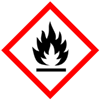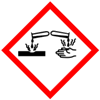 |
King of Chemicals Manufacturers |
Specifications, Properties, Uses, SDS of Formic Acid BP Ph Eur Analytical Reagent FCC Food Grade Manufacturer Supplier Exporter Wholesale & Small Packs, CAS Number 64-18-6. |
|
| King of Chemicals has several associated companies having accreditations like cGMP, GLP - FDA Approved Good Manufacturing Practice and Good Laboratory Practice of WHO standard, ISO-9001, ISO-14001, ISO/IEC 17025, ISO ISO-45000, HACCP, FSSC 220000, FSSAI, "REACH" Registered, Kosher & Halal Certified. e-CTD and DMF support can be made available if needed. We offer USP NF BP Ph Eur EP IP JP Analytical Reagent FCC Food Grade Chemicals & Nutraceuticals. | |
        |
|
Muby Chem Pvt. Ltd. is a several decades old group of companies, engaged in manufacturing, supplying, distributing, wholesale supplies of Formic Acid BP Ph Eur Analytical Reagent FCC Food Grade for actual users, including retail or small pack supplies for research and development work.
We supply fine and speciality chemicals, pharmaceutical excipients, mineral fortifiers in chemically pure, analytical reagent grade, IP BP USP Ph Eur EP JP and other pharmaceutical grade monograph including FCC Food grade chemicals and Nutraceuticals at best prices. We and/or our associated units have all the facilities to supply as per cGMP standard observing good manufacturing practice and good laboratory practice. We can assure low microbial count and also offer a test certificate for the same. We maintain warehouses across USA, India, and UAE. Our group exports to USA, Canada, Mexico, Argentina, Brazil, Chile, Korea, Malaysia, Thailand, Indonesia, Europe, and several other parts of the world. We supply in wholesale container loads to small pack of few grams. Solid products may be specified for it size and shape as desired by the buyer.
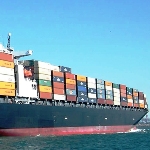
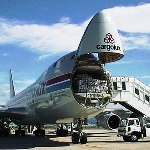
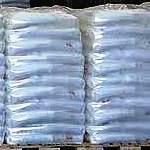
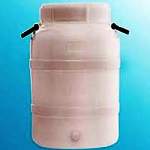
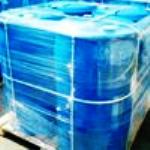
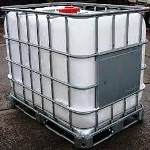
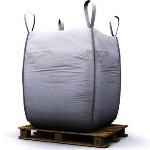
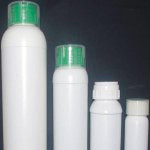

Formic Acid CAS Number 64-18-6
For Properties Specifications Uses of Formic Acid Click Properties, Specifications, Uses, Price, Process of Formic Acid Manufacturer.
For For SDS MSDS Sheet of Formic Acid Click SDS Safety Data Sheet MSDS Sheet of Formic Acid Manufacturer.
The Properties, Specifications, Monograph and Uses of Formic Acid:
Formic Acid is an important intermediate in chemical synthesis
Formic Acid BP Ph Eur Grade Specifications:
CH2O2 --- 46.03 --- CAS 64-18-6
DEFINITION
Content: 98.0 per cent mlm to 100.5 per cent mlm.
CHARACTERS
Appearance: Clear, colourless, volatile liquid.
Solubility: Miscible with water, with ethanol (96 per cent) and with methylene chloride.
IDENTIFICATION
First identification: A, B.
Second identification: B, C, D.
A. Infrared absorption spectrophotometry (2.2.24).
B. A 100 g/L solution is strongly acid.
C. To 2.0 mL of dilute sodium hydroxide solution add 0.05 mL of phenolphthalein solution. Mix and add dropwise the substance to be examined until the solution becomes colourless. To 1 mL of this solution add 0.5 mL of silver nitrate solution and mix. Initially no change occurs. Slowly (quicker upon heating), the solution turns greyish and turbid due to the precipitation of metallic silver.
D. To the remainder of the neutralized solution obtained in identification test C, add 0.5 mL of ferric chloride solution. The solution turns orange-red or brownish red.
Solution S: Extract residue obtained in the test for residue on evaporation by heating with 2 quantities, each of 15 mL of distilled water. After cooling, dilute the combined extracts to 50.0 mL with distilled water.
Appearance: The substance to be examined is clear (2.2.1) and colourless
Relative density: 1.217 to 1.223.
Related substances: To pass the test by Liquid chromatography.
Chlorides: Maximum 10 ppm.
Sulfates: Maximum 50 ppm.
Sulfites: Maximum 300 ppm.
Residue on evaporation: Maximum 0.01 per cent.
Formic Acid FCC Food Grade:
HCOOH
CH2O2 Formula wt 46.03
INS: 236 CAS: [64-18-6]
FEMA: 2487
DESCRIPTION
Formic Acid occurs as a clear, colorless, highly corrosive liquid with a characteristic, pungent odor. It is miscible with water, with alcohol, with glycerin, and with ether. Its specific gravity is about 1.20.
Function: Flavoring adjunct; preservative.
REQUIREMENTS
Identification:
A. Add 2 mL of mercuric chloride to 5 mL of sample, and warm the mixture. A white precipitate of mercurous chloride forms.
B. Neutralize 1 mL of sample with sodium hydroxide, and then add 2 drops in excess and 1 mL of ferric chloride. A deep, red-orange color appears that turns to yellow-orange on the addition of mineral acids.
C. Place 2 mL of sample in a test tube, add 5 mL of sulfuric acid, and test the gas evolved with a lighted splinter. A blue flame characteristic of carbon monoxide is produced.
Assay: Not less than 85.0% of CH2O2.
Acetic Acid: Not more than 0.4%.
Dilution Test: Passes test.
Sulfate: Not more than 0.004%.
Formic Acid, 96% Analytical Reagent Grade:
HCOOH --- Formula Wt 46.03 --- CAS Number 64-18-6
CAUTION: Slow decomposition of this reagent may produce pressure in the bottle. Loosen cap occasionally to vent the gas.
REQUIREMENTS
Assay: 96.0% HCOOH
MAXIMUM ALLOWABLE
Color (APHA): 15
Dilution test: Passes test
Residue after evaporation: 0.003%
Acetic acid (CH3COOH): 0.4%
Ammonium (NH4): 0.005%
Chloride (Cl): 0.001%
Sulfate (SO4): 0.003%
Sulfite (SO3): Passes test
Heavy metals (as Pb): 0.001%
Iron (Fe): 0.001%.
Formic Acid, 88% Analytical Reagent Grade:
HCOOH --- Formula Wt 46.03 --- CAS Number 64-18-6
REQUIREMENTS
Assay: 88.0% HCOOH
MAXIMUM ALLOWABLE
Color (APHA): 15
Dilution test: Passes test
Residue after evaporation: 0.002%
Acetic acid (CH3COOH): 0.4%
Ammonium (NH4): 0.005%
Chloride (Cl) 0.001%
Sulfate (SO4): 0.002%
Sulfite (SO3): Passes test
Heavy metals (as Pb): 5 ppm
Iron (Fe): 5 ppm.
The MSDS-SDS Hazard Statement of Formic Acid:
Formic Acid or Methanoic acid SDS GHS, Safety Data Sheet
MSDS Sheet, Material Safety Data Sheet 28-March-25
1. Product Identification
Product Name & Other Names: Formic Acid or Methanoic acid.
CAS No.: 64-18-6
EINECS EC No.: 200-579-1
Relevant uses and uses advised against (if any): Industrial Manufacturing.
2. Hazards Identification
GHS, Globally Harmonized System Classification in accordance with 29 CFR 1910
Hazard Class and Category Code(s), Regulation (EC) No 1272/2008 (CLP):
Flammable liquids (Category 3) H226
Acute toxicity, Oral (Category 4) H302
Skin corrosion (Category 1A), H314
Acute toxicity, Inhalation (Category 3) H331
Labeling according to Regulation (EC) No 1272/2008
GHS Label Elements  Toxic |
GHS Label Elements |
GHS Label Elements |
Signal Words: Danger
Hazard statements:
H226: Flammable liquid and vapor.
H302: Harmful if swallowed.
H314: Causes severe skin burns and eye damage.
H331: Toxic if inhaled.
EUH071: Corrosive to the respiratory tract.
Precautionary statements:
P210: Keep away from heat/sparks/open flames/hot surfaces – No smoking.
P233: Keep container tightly closed.
P240: Ground/bond container and receiving equipment.
P241: Use explosion-proof electrical/ventilating/light/…/equipment.
P242: Use only non-sparking tools.
P243: Take precautionary measures against static discharge.
P261: Avoid breathing dust/fume/gas/mist/vapors/spray.
P270: Do not eat, drink or smoke when using this product.
P271: Use only outdoors or in a well-ventilated area.
P280: Wear protective gloves/protective clothing/eye protection/face protection.
P301+310: IF SWALLOWED: Immediately call a POISON CENTER or doctor/physician.
P302+352: IF ON SKIN: Wash with soap and water.
P304+340: IF INHALED: Remove victim to fresh air and keep at rest in a position comfortable for breathing.
P305+351+338: IF IN EYES: Rinse cautiously with water for several minutes. Remove contact lenses if present and easy to do – continue rinsing.
P370+378: In case of fire: Use water spray or fog for extinction.
P403+233: Store in a well-ventilated place. Keep container tightly closed.
3. Composition/Information on Ingredients
Product Name & Other Names: Formic Acid or Methanoic acid.
CAS No.: 64-18-6
EINECS EC No.: 200-579-1
4. First Aid Measures
Always seek medical attention after first aid measures are provided.
Inhalation: Remove to fresh air. If not breathing, give artificial respiration. If breathing is difficult, give oxygen. Get medical attention.
Ingestion: Never give anything by mouth to an unconscious person. Get medical attention.
Skin Contact: Wipe off excess material from skin then immediately flush skin with plenty of water for at least 15 minutes. Remove contaminated clothing and shoes. Get medical attention. Wash clothing before reuse. Get medical attention.
Eye Contact: Immediately flush eyes with plenty of water for at least 15 minutes, lifting lower and upper eyelids occasionally. Get medical attention immediately.
5. Fire Fighting Measures
Flammability of the Product: Flammable.
Suitable extinguishing media: Carbon dioxide (CO2). Extinguishing powder. Water spray (fog). Alcohol resistant foam.
Auto-Ignition Temperature: 520.
Flash Points: 50C
Products of Combustion: Carbon dioxide, Carbon monoxide, Toxic fumes.
Explosion: Cool containers with flooding quantities of water until well after fire is out. Prevent fire extinguishing water from contaminating surface water or the ground water system. Explosive in presence of heat.
Fire Extinguishing Media: Use water spray or fog. Flammable liquid and vapor. Vapors are heavier than air and may travel to a source of ignition and flash back. Vapors can spread along the ground and collect in low or confined areas. Never direct a water jet in the container to prevent any splashing of the product which could cause spreading of the fire. Cool containing vessels with water jet in order to prevent pressure build-up, auto-ignition or explosion.
Special Information: In the event of a fire, wear full protective clothing and NIOSH-approved self-contained breathing apparatus with full face piece operated in the pressure demand or other positive pressure mode. At high temperatures under fire conditions, it may produce toxic or irritating fumes. Keep away from sources of ignition.
6. Accidental Release Measures
Personal precautions, protective equipment, and emergency procedures: Avoid breathing dust/fumes/gas/mist/vapors/spray. Use individual protective equipment (waterproof boots, suitable protective clothing, safety glasses, etc.). Restrict unprotected personnel from the area.
Environmental precautions: Do not let the product enter drains, soil, or water sources.
Methods and materials used for containment Cleanup procedures and Storage: Do not inhale dust, vapors, mist, or gas. Avoid dust formation. Contain spilled material. Cover with an inert, non-combustible absorbent material, (e.g. sand, earth, diatomaceous earth, vermiculite). Use a shovel to put the material into a convenient waste disposal container.
Large liquid spillages should be contained by use of sand or another inert material. Dyke to collect large liquid spills. Pump up the product into a spare container suitably labeled. The spillage should be transferred to a suitable container and recovered or disposed of in accordance with local regulations. Because of the danger of spontaneous combustion, any combustible material, such as cloth, used for cleaning spillages, should be saturated with water, and disposed of promptly, preferably by incineration.
7. Handling and Storage
Precautions for safe handling: Do not ingest. Apply according to good manufacturing and industrial hygiene practices. Ensure proper ventilation. In case of insufficient ventilation, wear suitable respiratory equipment. Do not drink, eat, or smoke while handling. Avoid contact with skin, eyes, and clothing. Minimize dust generation. Avoid breathing dust/fumes/gas/mist/vapors/spray. Keep container tightly closed. Avoid ingestion and inhalation. Use individual protective equipment (waterproof boots, suitable protective clothing, safety glasses, etc.).
Conditions for safe storage, including any incompatibilities: Store in cool, dry, and ventilated area away from heat sources and protected from sunlight in tightly closed original container. Keep air contact to a minimum. Store protected from heat, sparks and ignition sources and incompatible materials. Avoid contact with skin and eyes. Avoid inhalation of dust/mist/vapor. Do not store with incompatible materials like strong oxidizing agents, strong reducing agents, strong acids, strong bases.
8. Exposure Controls/Personal Protection
Airborne Exposure Limits:|
USA ACGIH TLV: TWA: 5 ppm; STEL: 10 ppm
USA OSHA PEL: (Vacated) TWA: 5 ppm, (Vacated) TWA: 9 mg/m3; TWA: 5 ppm, TWA: 9 mg/m3
Ventilation System: A system of local and/or general exhaust is recommended to keep employee exposures as low as possible.
Personal Respirators (NIOSH Approved): For conditions of use where exposure to dust or mist is apparent and engineering controls are not feasible, a particulate respirator may be worn.
Skin Protection: Wear protective gloves and clean body-covering clothing.
Eye Protection: Use chemical safety goggles and/or full face shield where dusting or splashing of solutions is possible. Maintain eye wash fountain and quick-drench facilities in work area.
Other Control Measures: Maintain good housekeeping in work area. Handle in accordance with good industrial hygiene and safety practice. Wash hands after handling.
9. Physical and Chemical Properties
Appearance: Colorless fuming liquid.
Odor: Pungent, penetrating.
Odor threshold: No information found.
pH: around 2.
Relative density: about 1.22
Melting point: 8C literature.
Boiling point: 101C literature.
Flash point: 50C literature. (Lowest of the reported).
Auto-ignition temperature: >500C literature.
Decomposition temperature: 350 C
Upper/lower flammability or explosive limits: No information found.
Vapor pressure: No information found.
Vapor density: No information found.
Evaporation rate: No information found.
Flammability (solid, gas): No information found.
Partition coefficient: n-octanol/water: No information found.
Solubility: It is miscible in water.
Viscosity: No information found.
10. Stability and Reactivity
Stability: Stable under ordinary conditions of use and storage. Vapors may form explosive mixture with air. Contact with metals may evolve flammable hydrogen gas. Reacts with: Strong bases, Oxidizing substances. Mixtures with high formic acid content can decompose spontaneously and create overpressure and receptacle burst. Sunlight and heat will increase the risk of decomposition.
Hazardous Decomposition Products: It emits Carbon dioxide, Carbon monoxide, Toxic fumes.
Hazardous Polymerization: Will not occur.
Incompatibilities: Strong oxidizing agents, strong reducing agents, strong acids, strong bases.
Conditions to Avoid: Incompatibles, oxidizing agents, strong alkalis, strong acids, heat & light.
11. Toxicological Information
Toxicity data
ORAL-RAT LD50 730 mg/kg
INHALATION-RAT LC50 7.4 mg/l 4 hours.
Carcinogenicity: CAS# 105-39-5: Not listed by ACGIH, IARC, NTP, or CA Prop 65.
Epidemiology: No information found.
Teratogenicity: No information found.
Reproductive Effects: No information found.
Mutagenicity: No information found.
12. Ecological Information
Environmental Toxicity:
Toxicity to fish: LC50 - Leuciscus idus (Golden orfe) - 46 - 100 mg/l - 96 h.
Toxicity to daphnia and other aquatic invertebrates: EC50 - Daphnia magna (Water flea) - 34,2 mg/l - 48 h.
Environmental Fate: No information found.
Products of Biodegradation: Possibly hazardous short term degradation products are not likely.
Persistence and Degradability: Miscible with water Persistence is unlikely based on information available.
Mobility: Will likely be mobile in the environment due to its water solubility.
13. Disposal Considerations
Whatever cannot be saved for recovery or recycling should be managed in an appropriate and approved waste disposal facility.
14. Transport Information
Land Transport DOT USA, TDG Canada & ADR/RID Europe:
Shipping Name: FORMIC ACID
UN Number: UN1779
Hazard Class: 8(3), Packing Group: II
Sea Transport IMO/IMDG:
Shipping Name: FORMIC ACID
UN Number: UN1779
Hazard Class: 8(3), Packing Group: II
Air Transport ICAO/IATA:
Shipping Name: FORMIC ACID
UN Number: UN1779
Hazard Class: 8(3), Packing Group: II
15. Regulatory Information
USA:
SARA 311/312 Hazards: Acute healthe hazard, Chronic hazard, Fire hazard..
California Prop. 65 Components: Not listed..
16. Other Information
DISCLAIMER: The information and recommendations set forth herein are presented in good faith and believed correct as of the date hereof. It is compiled from various sources, and it is not necessarily all inclusive nor fully adequate in every circumstance. In addition, these suggestions should not be confused with nor followed in violation of applicable laws, regulations, rules, or insurance requirements applicable. This SDS MSDS sheet is intended only as a guide to the appropriate precautionary handling of the material by a professionally trained person using this product. Individuals receiving the information must exercise their independent judgment in determining its appropriateness for a particular purpose. This shall not constitute a guarantee for any specific product features and shall not establish a legally valid contractual relationship. In no case shall our company be liable to loss or damages by the product user.

Formic Acid Manufacturers, Suppliers, Exporters, Wholesalers:
King of Chemicals manufacturers

Plot No. 2900/46&47 + 2900/163to167, GIDC, Ankleshwar, Dist. Bharuch, India
India, USA, UAE
TEL: (Office) 91-22-23774610, 91-22-23723564
e-mail: info@kingofchemicals.com
Copyright and Usual Disclaimer is Applicable --- March 28, 2025
If I give you “My Word” Nobody can undo it.
If I sign an “Agreement” my Lawyer will undo it
Our products are for industrial and laboratory use only. The user must test the material before use. We are not dispensing chemists or druggist and do not offer over the counter type (OTC) products for medical use by individuals.
We and our associates manufacture pure chemicals surpassing Monograph Specifications of Analytical Reagent Standards, British & European Pharmacopoeia BP Ph Eur EP Standard, US Pharmacopoeia USP NF Standard, Indian Pharmacopoeia IP Standard, Japan Pharmacopoeia JP Standard, FCC Food Grade Standard. |
|
